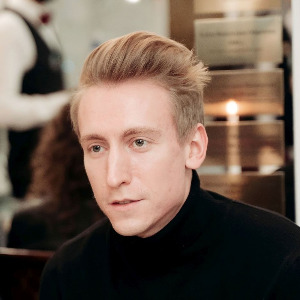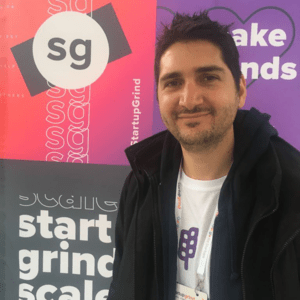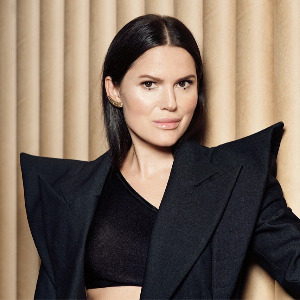I’m a computer engineer transformed into a ⚙️ passionate No Coder ⚙️. Reach out if you want to get introduced or learn more about the No Code world!
It’s not so complicated: Discovering the right product to create
By having a good discovery process you can be more confident you are building the right thing.
A lot of time, energy and money can be spent building the wrong thing that might not be right for your target audience.
And you might be targeting the wrong market.
That is wasted energy and effort, your business cannot afford.
Join Yoav Farbey to learn more about:
- not falling in love with your ideas, but with the customer and problem-discovery process
- not building the wrong solution for your audience
- good and continuous product discovery
- 5 principles for product discovery
Tools mentioned:
- The book Continuous Discovery Habits by Teresa Torres
- The book Sprint by Jake Knupp
- Userlytics, to improve your customer and user experience
- Design Thinking Methodology, as a process to create innovative solutions
- Miro & Notion, for collaborating with your team
And all these in less than 13 min.
Transcript
Yoav Farbey: Well hello, my name is Yoav. I am currently a product manager at a company called CleanHub. We do plastic collection and management in countries that don’t have good plastic and recycling infrastructures. I have 10 years experience in product management from very large corporations and consulting firms to smaller startups. I’m currently based in the Netherlands. And I’m very excited to be on the podcast with Growth Mentor.
Spyros Tsoukalas: Welcome Yoav. What an impactful line of work you’re following, like you’re saving the world.
Yoav Farbey: First not alone. And you know, it’s plastic pollution is such a big problem. Even it’s not clean up on its own console. But I think it’s something that I was looking for, in recent years, when I was looking at different challenges from an employment perspective. So I’ve been doing some years in Eevee. And then this opportunity with cleanup came up. And I was like, yeah, why not? Let’s let’s give that a go and try and make a positive impact while building good tech.
Spyros Tsoukalas: Amazing, amazing. Today’s topic is product management for founders, which is super interesting for me. So let’s start. Could you could you tell us something we don’t know about founders and product management skills?
Yoav Farbey: I think I would start with something that may be known. But I think it’s almost always important to repeat is the skills that come from product management that founders can learn from or use the product managers in the organisation is to make sure that you’re always building the right thing. Because so much time energy and money can be spent building the wrong thing that might not be right for your target audience when you might be targeting the wrong market. That is, like wasted energy and effort. That is always what comes back to what’s good product managers, management is build the right thing for your audience build the right thing for the customers. And I’m sure today we will talk in a bit more detail how how to do that.
Spyros Tsoukalas: So under this context, could you list a few pitfalls that founders experience? Like? I guess there are many mistakes taking place under this context is broad context.
Yoav Farbey: Sure, I mean, I think that that challenge is not just for founders, I think it’s for product teams in general, where you have an idea whether it’s the founder, or whether it’s a product manager, that you personally have a really strong feeling of this is the right thing to build. And I should get my team or work with my small startup to release and get it to, to market as quickly as possible. So we beat competition. So, we make a mark, and satisfy, let’s say, our investors, our employees, and obviously, our customers. However, if you just follow that instinct, without testing it, or without doing some discovery work, and again, I can doubt we’ll dive into detail in a moment about good discovery, you might end up building something that you had like the right idea of you’re, you’re tackling the right problem, but you built the wrong solution. Or maybe, you found a problem that is very niche, and therefore can’t scale. So, you might say, your business will suffer by by focusing maybe too narrow or too broadly. And again, if you have a good discovery process, you can learn relatively quickly, when comparing to having an idea and building it. Whether you’re on the right track solving the right problem serving your customers correctly.
Spyros Tsoukalas: I have been there done that. So, either a product team or a founding team, like how could they especially founders, use the product managers perspective, to do their to achieve their goals? Probably more, more effectively and more quickly.
Yoav Farbey: Yeah, so I’m a big advocate in my professional life for good and continuous product discovery. There’s a really good book by Teresa Torres called Continuous Discovery Habits, which I would recommend the listeners to have a look at, or maybe such her on YouTube if you don’t have time to read the book. And it basically goes into how to really test hypotheses because of course, you’re sitting in your office as a founder as a product person you’d like I’ve got all these ideas, especially as a startup, you almost feel like there’s too many things to do and not enough time to do them. First of all, how do you prioritise. How do you know which one is the right one? And then going and doing a discovery process whether that’s benchmarking, which means looking at what your competitors are doing or similar companies are doing? That’s one thing to get an idea of is your hypothesis on the right track? Of course, if you have customers in your startup, go speak to them, see if they like your hypotheses, see what their reaction is. There’s many different methods to do that, especially now that we are working more remotely. There’s tools to support you. We use a Linux, it’s not the only tool available, but it’s one of many. And again, find the right way to contact potential customers or real customers to test your hypotheses. But once you get that kind of conversation level of testing, I would recommend going for a prototype. So, that’s normally when it comes to software designed thing, the design product or design feature that you can put in front of potential customers or real customers and get their feedback on to get a designed prototype is much quicker than going down the software engineering route of you have an idea you needed to designed and delivered, and then you get the feedback. So, all these different methods mean that you learn as a founder as a product manager, am I on the right track? Is my hypothesis correct? Will anyone care about the fact that I’m building this feature, or I’m building this product?
Spyros Tsoukalas: This is something that I have experienced, once again, and have the have made all the mistakes that you mentioned. And do you see any point because that’s something that intrigues me actually, where those kinds of thoughts apply to real life, those kind of those kinds of processes are applied, like in our real life outside of work.
Yoav Farbey: I’m not sure if I have personal examples, but I do know, there’s a book that became famous a few years ago, that’s called Sprint by Jake Knupp, which just which describes something that’s a product discovery sprint. So, like taking all these ideas of how to validate and testings in a very short amount of time. He took ideas of how to take design, thinking something called Design Thinking, and put it in a single book to make it a single workshop. That again, as a founder, a product manager, you can take his lessons, you can take his methodology, or the methodology from the book and apply it not necessarily to a single workshop. You can split it out, and again, refactor whatever you like, as long as you’re doing the right discovery. The reason why I bring him up, in particular is he has taken this format of discovery processes into his day to day life and in blogs and podcasts describes it.
Spyros Tsoukalas: Yeah, I’m very curious to learn the framework, or the process that you follow to apply all these learning and experiences that you have, either in your life as we just discussed, or in your work. So you mentioned all these details in processes earlier, like, how do you do that? Like, let’s say I’m a product manager, or I’m a founder, and I want to, like, deal with this aspect of my work? How do you do that? Like, what does it look for you? How does it look?
Yoav Farbey: So, in like to all these principles, there’s five steps. One is understand. So, do I understand the problem? When it comes to work? So do I understand the problem that I’m facing? Especially if I’m starting in a new company, or I’m starting a new challenge in my work? Do I understand it? Do I have a shared understanding with my colleagues, so is let’s say, I work with customer services, or marketing, or sales, do they have the same understanding as me, I need to go and speak to them. See, if we’re aligned, see if we can learn from each other. Then once you have that understanding from the right people in your organisation, and yourself, go and ideate. So, that’s the time where I encourage and all the methodologies encourage you and your team to get creative. So, think of as many and wild ideas as you want to solve the problem that you’ve already aligned on. And then take a moment to say congratulations, we have, let’s say 20 ideas on the wall on the mirror board. However, you’ve collected these ideas. However, as a small team, we’re unlikely to go and do these 20 more ideas, it’s time to converge and try and be a bit more realistic after being wild with your ideas. So, have a exercise to converge and say, What are these, let’s say in the example 20 ideas, what is realistic for us to build in the next weeks and months. Then, once you’ve decided, okay, from that 20, I want to bring three things forward, prototype them and test which basically goes back to what we started with. So you can use design prototypes using tools like Figma. You can even use paper prototyping, especially if you’ve got customers or potential customers coming in face to face. And you can show them a piece of paper and say what do you think about this? And that testing element will validate whether the thing that you converged on and prototypes is a good thing to go ahead and build. Or maybe you need to go back to the drawing board, maybe to maybe there’s other things on that 20 ideas that were better, and you just need to test them again. So, that kind of loop of understanding ideas, converge prototype and test is something that I go through with every challenge that I face. And depending on the size of the challenge, is the amount of time I invest in doing these exercises. So, if it’s a small challenge, I try and keep these phases really short, if it’s a big challenge. And you know, it will have, let’s say, a two year effect on my organisation, I don’t want to rush this, I want to do it properly and spend the right amount of time and again, as an experienced PM, we’ll face different challenges of these types and have an idea of what tools to use when and how much time to spend on on what challenge.
Spyros Tsoukalas: Clear, concise and actionable, which are like three of the basic pillars of how Growth Mentor works and wants to be. So, last question for today around this amazing insights that you have shared with us. Any tools that you recommend for this process, or any tools you use, and you recommend?
Yoav Farbey: Definitely the two books that I mentioned earlier, I think both Jake Knupp and Teresa Torres create a lot of content that’s usable for how to do good product discovery. There’s a lot about, there’s a methodology called Design Thinking, which is more from comes from service design. And if you’re if the listeners is interested, I recommend going reading up on Service Design and Design Thinking. I think from a digital perspective, like what digital tools to use, I like to use Miro. There’s other tools available, Notion is also good, that when it comes to deciding what digital tools to use, think about what is good for your team to collaborate on how can you collect ideas easily. And you know, Miro might not be the tool for you or your team. But you should be able to collect ideas, you should be able to collect hypotheses in a single place that really easy to share between you and your team. So, I’d recommend looking at the tools that I mentioned. And there’s plenty of other collaboration tools out there that might be right for your team.
Spyros Tsoukalas: We published an episode about the design thinking for scalability with Candelaria, another mentor a few episodes ago. So, this could be a great reference going back and for people listening to us going back and listening to that episode as well with Candelaria to save the whole picture around what you just described.
Yoav Farbey: Yeah, sure.
Spyros Tsoukalas: Yoav, thank you very much for being with us today and for sharing all these experiences and processes and ideas and learnings you have collected along your career. And I hope that the people listening to us will learn as much as many things as I learned with you today.
Yoav Farbey: Thank you so much for having me Spyros.
In this episode
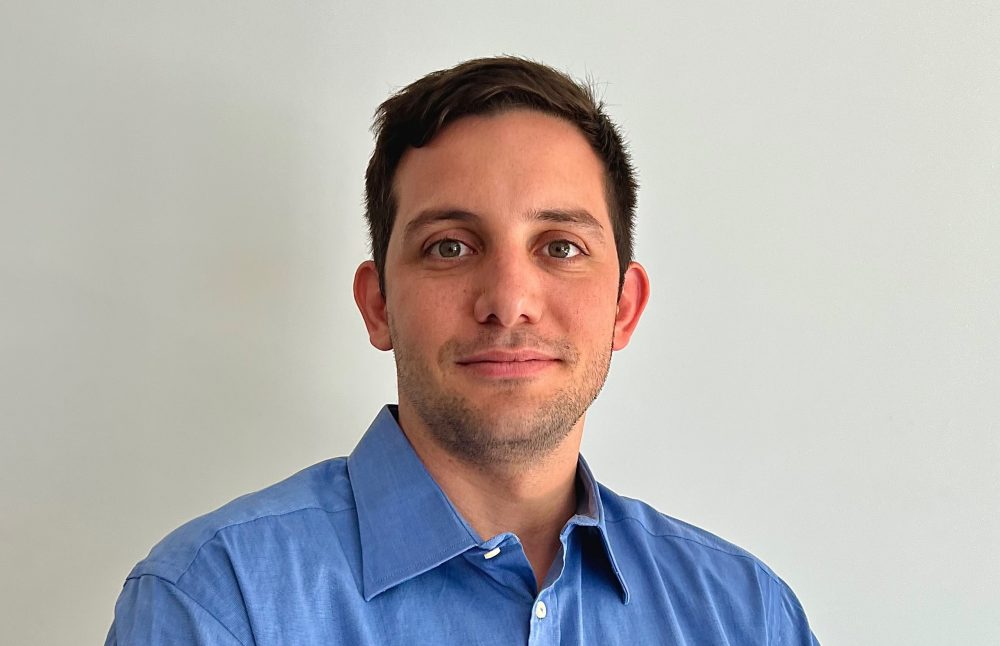
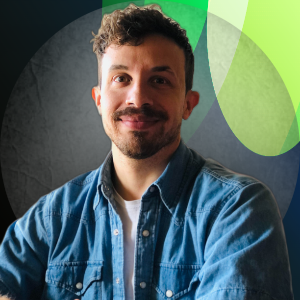
As a product leader with proven success across startups, scale-ups and large corporations. With 10+ years experience on B2B and B2C products as well as founding my own companies and exiting them. I have a unique perspective of what it takes to launch the right products that resonate with customers.
Join the community
Enjoy the peace of mind that advice is always only one Zoom call away.
